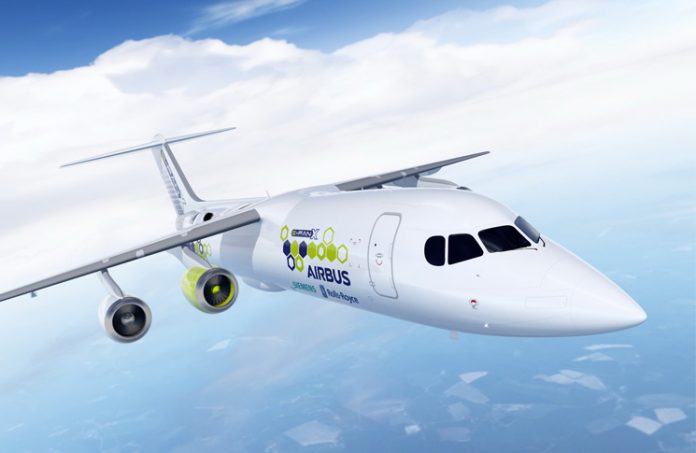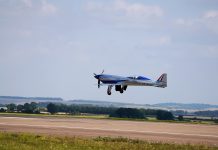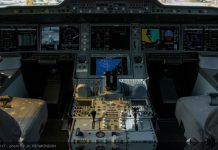Airbus, Siemens and Rolls-Royce are developing a two megawatt electric aircraft engine in a turboelectric hybrid aircraft.
The 2750 hp (2 MW, 2000 kW) electric drive, will be roughly equivalent in power to the Pratt and Whitney PW127 turboprop used to power the ATR72, or Rolls-Royce’s own Dart Mk 536, used in the Fokker F27.
The European aircraft consortium, the German electric power giant and the British aero engine maker will combine to develop the E-Fan X, a demonstrator based on a BAe 146 jet airliner. An electric ducted fan, powered by an onboard generator, will replace one, and eventually two, of the Bae 146’s four turbofan engines.
The E-Fan X demonstrator will explore the challenges of high-power propulsion systems, such as thermal effects, electric thrust management, altitude and dynamic effects on electric systems and electromagnetic compatibility issues. The objective is to push and mature the technology, performance, safety and reliability enabling quick progress on the hybrid electric technology. The program also aims at establishing the requirements for future certification of electrically powered aircraft while training a new generation of designers and engineers to bring hybrid-electric commercial aircraft one step closer to reality.
Airbus will be responsible for the airframe and control integration; Rolls-Royce will develop the gas turbine, generator and propulsion fan; and Siemens will develop the electric motor.
Rolls-Royce says ‘the E-Fan X demonstrator will explore the challenges of high-power propulsion systems, such as thermal effects, electric thrust management, altitude and dynamic effects on electric systems and electromagnetic compatibility issues.’
Airbus’ Chief Technology Officer, Paul Eremenko, said, ‘We see hybrid-electric propulsion as a compelling technology for the future of aviation.’
The project is a response to the technical environmental goals of the European Commission’s Flightpath 2050 Vision for Aviation. These include reduction of CO2 emissions by 75 per cent, reduction of NOx by 90 per cent and noise reduction by 65 per cent. ‘These cannot be achieved with the technologies existing today,’ the three companies say.
Siemens has already demonstrated smaller aircraft with 60 kW electric drive systems, and in July 2015, in a flight reminiscent of Louis Bleriot’s first crossing of the English Channel, pilot Didier Esteyne flew 74 km between England and France in the all-electric twin-engine E-Fan, developed by Esteyne and Airbus.






This makes seriously good sense given the high dependence of Europe on Middle Eastern good will for energy supplies.
How can it make good sense when the real problem is supplying a very large amount of energy/power, currently to be provided by a gas turbine in the body of the aircraft for this “experiment”?
It ignores the power source and makes no sense at all.
It is misguided to say the least and a lot of money for no good. Modern electric motors are not the problem, portable energy sources and high density storage are the crux of all the problems.
Inovative for aviation technology
As Rob says, what nonsense! A gas turbine of enormous power must be used in the aircraft. The electric motors, control gear and cabling just add weight. The whole idea is daft. Why would anyone with an ounce of thought, think this would reduce dependence on oil or hydrocarbons? It must be a ruse to get support to develop a better stationary turbine peak load powered power station as the RB211 engine has been applied for many years.
[…] is aiming for experimental flights of the system in 2021. The company is also developing a larger 2.5 MW system, using the AE 2100 turbine, that is being tested with Airbus on the E-Fan X demonstrator […]